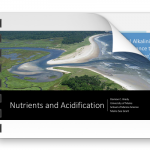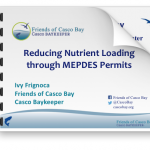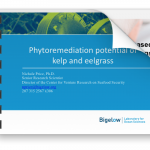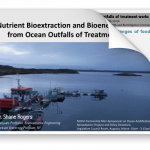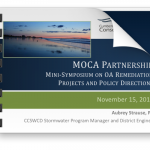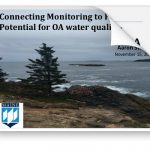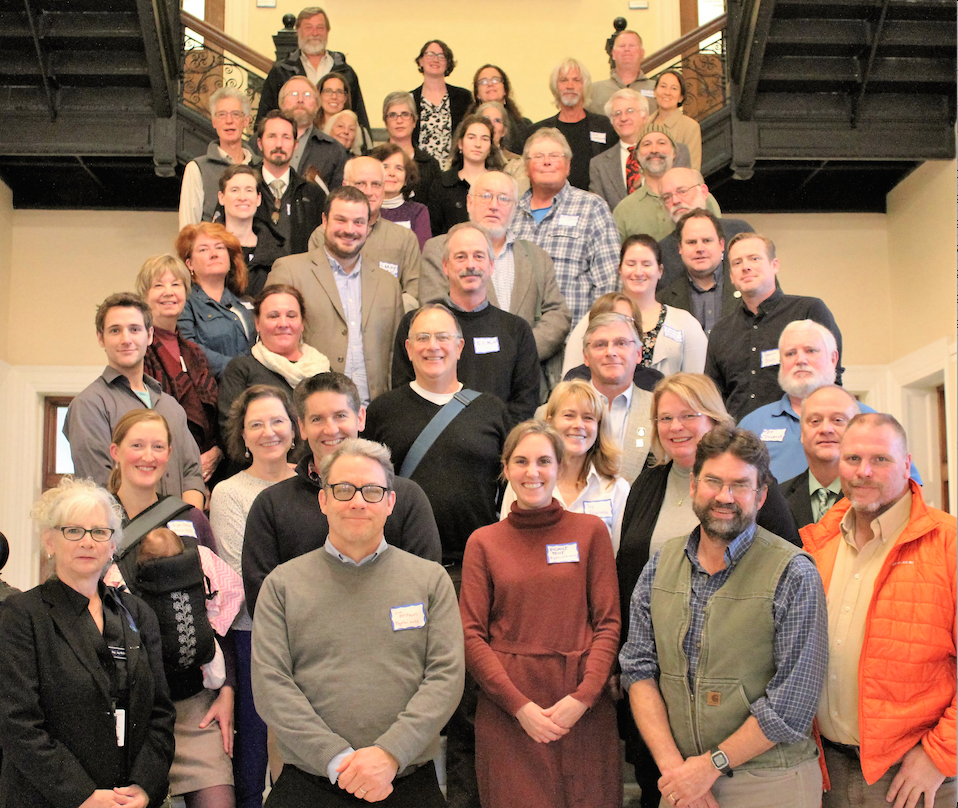
2016 Mini-Symposium – MOCA
What’s Happening around Ocean and Coastal Acidification in Maine
MOCA Partnership Updates, Nov. 2016
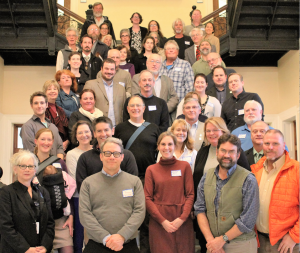
Jesica Waller’s paper on the effects of warming and OA on lobster larvae was recently published in ICES J Mar Sci. She defends her thesis the day after tomorrow (Thu Nov 17th)! In 2017 Rick Wahle (UM), David Field (Bigelow) and Spencer Greenwood (UPEI) will be starting their newly funded regional SG project to continue this work with a new graduate student by looking for evidence of local adaptation to warming and OA across subpopulations of lobsters spanning New England’s steep North-south thermal gradient.
In addition to our work on larval lobsters that Rick listed above, we are continuing our work on the effects of climate change on copepods. We have 2 recent papers on the effects of OA on morphology and physiology of marine copepods in the North Atlantic/Arctic (both in ICES-2016) and a third in review on genetic changes in copepods due to OA effects. We are also investigating changes in the biogeography of copepods species in the North. Atlantic and its impact of hybridization of species (proposal pending).
Friends of Casco Bay is offering a two-session course to 16 educators on November 2 & 16 on “A Changing Casco Bay.” The workshops include classroom activities, children’s books, and background readings on the local impacts of climate change, with a focus on estuaries and the Gulf of Maine.
Friends of Casco Bay continues to monitor water quality, including pH, through our citizen steward and water column profile programs, each of which are in their 24th year of collecting data. In addition, we have started a new program that measures water temperature, salinity, dissolved oxygen, pH, and pCO2 on an hourly basis year-round at one site in Casco Bay. We hope to expand this program to a second site in the near future. We also worked with Dr. Brian Beal on a sediment pH measurement project, looking into the potential benefits of various buffering materials on a clam flat.
Jack Reynolds, a student in the University of Maine’s Semester by the Sea program is studying how variable near shore acidification is at a variety of microhabitats and over time. He is recording much higher changes in pH within a day within a tidepool than is predicted to occur in the open ocean over the next century. His study is ongoing.
MOCA Mini-Symposium PowerPoint Presentations (PDF)
MOCA Mini-Symposium Presentations
November 2016
- Brady – Nutrients and Acidification
- Frignoca – Reducing Nutrient Loading Through MEPDES Permits
- Price – Phytoremediation Potential of Kelp and Eelgrass
- Rogers – Nutrient Bioextraction and Bioenergy Recovery from Ocean Outfalls of Treatment Works
- Strause – MOCA Partnership Mini-Symposium on OA Remediation
- Strong – Connecting Monitoring to Policy: Potential for OA Water Quality Control Criteria
Morning Cut
Afternoon Cut
Agenda, Clicker Questions, Symposium Summary & Survey
Mini-Symposium Agenda PDF
Clicker Question Results (PDF)
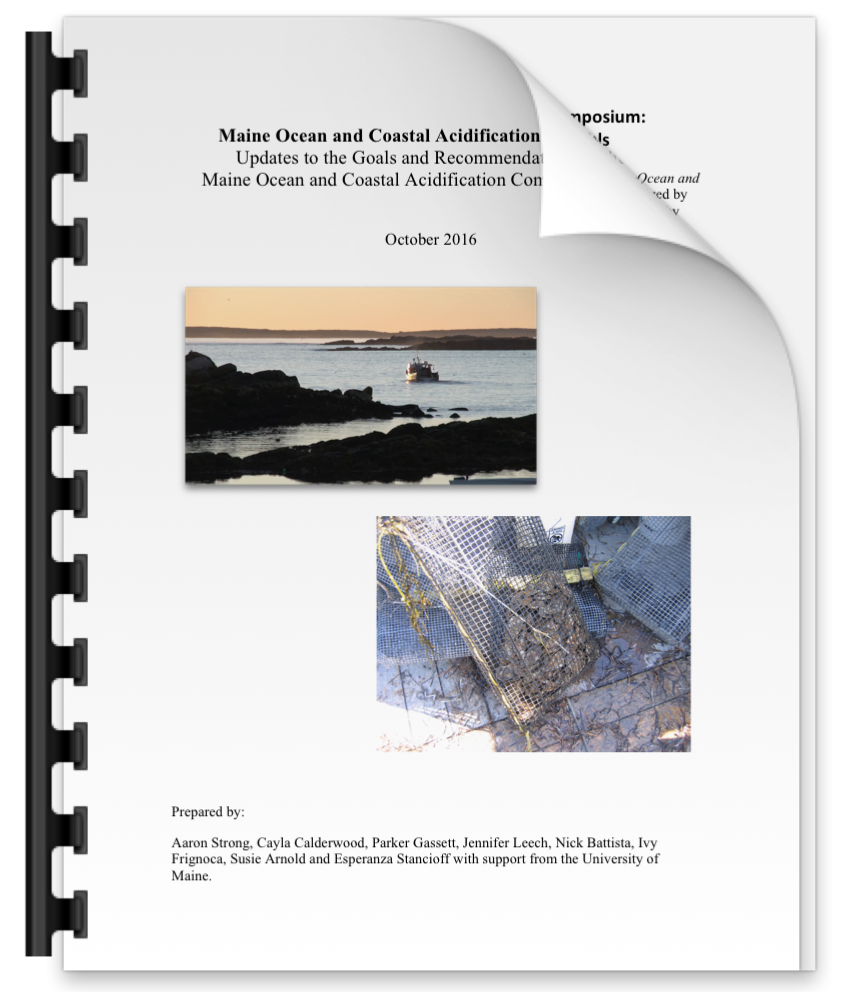 |
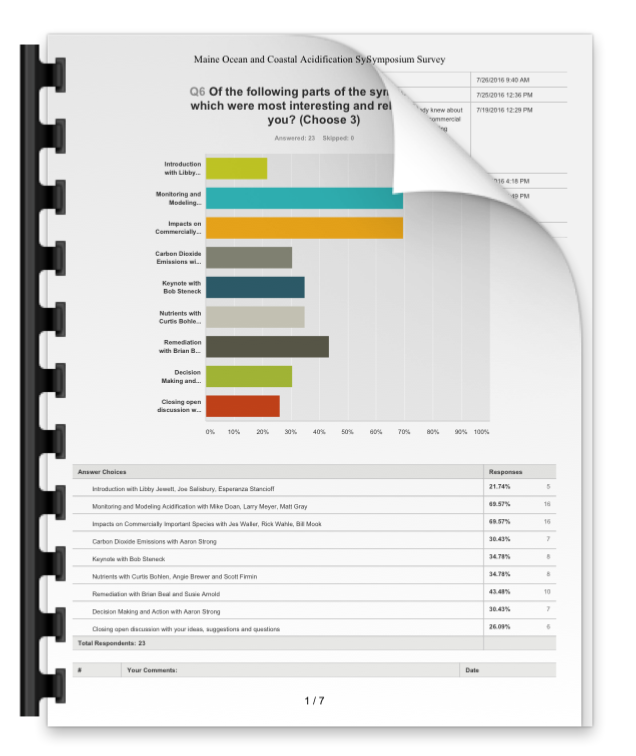 |
| June 2016 Symposium Summary | June 2016 Symposium Survey |
MOCA Partnership Mini-Symposium on OA Remediation Projects and Policy Directions: Meeting Summary
November 15, 2016; 10:00am-3:15pm
Augusta, Legislative Council Room
54 people attended, including representatives from all 3 state agencies involved with MOCA (DEP, DMR, DACF) and several legislators. The presentations prompted excellent discussion with a general feeling that we need to determine the relative contributions of terrestrial and oceanic drivers of OCA before instating water quality criteria specific to OCA. In the meantime, there are existing regulatory tools that can and should be used. MOCA’s next steps include a presentation to the Coastal Caucus of legislators in January 2017 and a reinstatement of the monitoring and policy subgroups to work on a comprehensive monitoring plan for Maine.
Presentation Notes
Damian Brady (University of Maine) – Nutrients and Acidification
- Lot of noise in near shore coastal acidification every day due to photosynthesis (taking DIC out of water) and respiration (adding DIC to water); hard to pick up long term trends
- DIC plus nutrients create organic matter- initially fuels higher pH, but after it sinks and goes the other way; these processes are decoupled via stratification; a well-mixed estuary may not have this problem
- While all estuaries are different, all Maine estuaries are under the influence of the Gulf of Maine, which is a huge source of nitrogen (offshore mass of low pH water)
- We need to get a better handle on the sources (land, sea, and sediments); model DIC
- Need river gauging; river flow * nutrient concentration = nutrient loading
Aubrey Strause (Cumberland County Soil and Water Conservation District – Stormwater Management in Maine
- Stormwater = water that hits impervious surfaces; contains all sorts of contaminants
- Storm drains are separated from wastewater systems; they go to local waterbodies without treatment (except for the few communities that have combined systems)
- State stormwater law- improved regulations for new and re-development over an acre (Chapter 500)
- Clean Water Act permits in Maine are MS4 (Municipal Separate Storm Sewer System); MS4 towns have to abide by 6 minimum control measures
- Long Creek project in South Portland is model- ex) vegetated medians, gravel wetland
Shane Rogers (Clarkson University) – Nutrient Bioextraction and Bioenergy Recovery from Ocean Outfalls of Treatment Works
- Investigating nutrient bioextractive potential of sugar kelp for use at wastewater treatment plants
- Worked with Ocean Approved and Boothbay Harbor Sanitary District
- If 45 tons of fresh kelp can be produced per hectare per year (4.6 tons of dry biomass), the annual net nitrogen removal rate is 88 kg/ha/yr
- For every million gallons per day of flow rate from treatment plant, need 16 hectares of kelp to every 1 mg/L of nitrogen from that flow rate
- Example from model: if we had 9.6 mg/L in effluent, a plant with 2 million gallons/day would need 50 ha of kelp farm to meet primary treatment levels (8 mg/L)
- For plants needing secondary or tertiary treatment, you would need a LOT of kelp, but kelp could be a useful part of the equation
Nichole Price (Bigelow Laboratory) – Phytoremediation potential of kelp and eelgrass
- In lab, all 4 macrophytes tested, the more CO2 available, the more they absorbed, with sugar kelp being the most effective
- In field at Ocean Approved kelp farm, found that sugar kelp has ability to raise seawater pH and aragonite saturation state; but, once kelp gets very large and growth rate slows and it becomes fouled with respiring organisms, detected a shift from net productivity to net respiration,
- Integrated multitrophic aquaculture (collocating kelp with mussels) may shorten time to market for mussels, but timing of the kelp removal may be key to phytoremediation benefits
- In field, a cove with eelgrass cover had higher pH and oxygen content during month of peak production than a cove without eelgrass
- Next steps are to quantify size and magnitude of remediated ‘halo’ at kelp farm and better understand timing of harvest
Beth Turner (NOAA) – Northeast Coastal Acidification Network (NECAN) Update
- New website online including reference library with annotated bibliography
- Guidance document coming out for OCA monitoring
- Webinar series is back!
Representative Mick Devin – Legislative Update
- Noted how well state agencies are represented within MOCA and pointed to the importance of MOCA in educating legislators
- First Coastal Caucus meeting with new legislature is January 17; Rep. Blume will invite presentation about OCA
Aaron Strong (UMaine) – Connecting Monitoring to Policy: Potential for OA Water Quality Criteria
- pH is a recognized pollutant under CWA- marine waters pH should be between 6.5 and 8.5 and should not change more than .2 pH units from “normal” (as of 1976 and renewed in 1986)
- We currently aren’t using the CWA to manage OCA because with the state of science and monitoring, we don’t know what “normal” is
- EPA is being sued again by the Center for Biological Diversity because current numeric and narrative/biological criteria require listing waters as impaired and because they want EPA to update its National Standards to reflect the latest science
- Water quality standards for OCA could move beyond pH (aragonite saturation state or pCO2) or could be an ecological narrative criteria, but for any approach, monitoring data is key- need baseline data on natural variability and need to link biological and biogeochemical data
Ivy Frignoca (Friends of Casco Bay) – Reducing Nutrient Loading through MEPDES Permits
- Under CWA, point source must have NPDES permit to discharge pollutants, including nitrogen
- In ME, EPA delegated its authority to issue NPDES permits to ME DEP but retains oversight of the program; called MEPDES permits
- 2 ways to set nitrogen limits: numeric or narrative
- 2007 law required ME DEP to develop numeric nutrient criteria and to focus on Casco Bay first; to date, no criteria developed; few states have developed numeric criteria
- ME uses narrative criteria [ex) if nitrogen level in receiving water exceeds .32 mg/l, then need to assess reasonable potential of discharge to impact eelgrass]; ME DEP currently does this using a far field dilution model which is not used elsewhere in the country and which EPA and Friends of Casco Bay have questioned, as it appears to disregard impacts to eelgrass closer to the discharge
- The narrative nitrogen criteria ME DEP currently uses is not specifically designed to address OCA; it is, however, designed to keep nitrogen loading to levels that do not have a reasonable potential to negatively impact aquatic life

